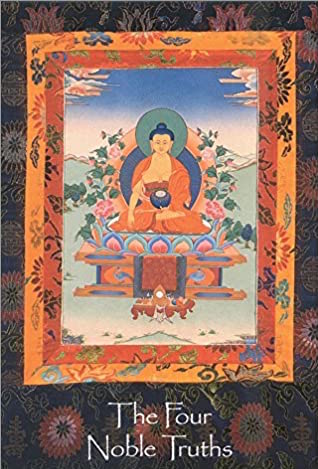
This is week two contemplating the first Noble Truth: dukkha, (suffering or unsatisfactoriness). I heard a great teacher suggest a bumper sticker: “I stop for suffering”. Today we pause and take a good look at suffering.
During the 60s, a teenager went to meet Master Suzuki Roshi, the San Francisco Zen Center founder, as she heard that he taught how to get high without a substance. Suzuki proceeded talk about the Four Noble truths, while she did not come to hear about suffering, the Roshi was so happy talking about it, she became a student.
Sometimes people interpret Buddhist psychology as pessimistic, “Life is suffering.” and don’t want to hear any more. This is misunderstanding a pragmatic concept.
‘Dukkha’ can also be translated as stress, discomfort, unease or dissatisfaction.
The Buddha doesn’t say that everything is suffering, but many things in life cause dukkha.
The Buddha defines dukkha with his experiences upon leaving his palace, known as The Four Passing Sights: old age, sickness, death and monasticism. Prince Siddhartha Gautama was sheltered until age 29. But seeing the Sights started a quest. While there is suffering in the Sights, so to in things not going the way we want them to.
While accepting that there is suffering in the world; we must truly contemplate and understand the cause. We might think money brings happiness. Yet, those who have a lot suffer worrying about losing it. Something promising happiness, leads to suffering. Without understanding this connection, we cannot free ourselves from bondage.
Buddhism emphasizes not denying the severity of suffering, but an honest assessment and being with it, embracing reality, while concomitantly emphasizing happiness. Known to be very happy, the Buddha referred to those attempting freedom from suffering as the happy ones.
Recognizing the nature of suffering, the Buddha looked for a solution. Often compared to a physician, he diagnosed the problem in the first two Noble Truths (suffering) and identified its cause. The third is the realization of a cure and The fourth, explaining the Eightfold Path, is the prescription to end suffering.
This prescription emphasizes the cultivation forms of well-being, such as happiness, gladness and joy. That foundation provides the ability to be with the many layers of suffering. Quieting ourselves, we might see our deepest fears and attachments but eventually the path leads to sukkha (happiness or contentment).
Since the Buddha’s time, people have walked this path and suffered just like us, the society buckling and kingdoms collapsing, war, disciples dying and he was an old man with a bad back. But he died at peace. He found a way to co-exist with suffering. He was realistic about it.
“Life is suffering.” is discouraging and not part of the teachings.
Walking the path, cultivating relaxation, peace and happiness, in self-compassion, facing the enormous challenges before us and being present with it.
Another key to this gradual process is an ethical life. Most obviously, how we speak: honestly, kindly and not harshly, and practicing generosity with our time and resources. Sila (ethical conduct) is about doing and not doing. Your don’t have to wait for your inner-state to change, you behave differently to cultivate the inner-state. Ethical action leads to the bliss of blamelessness, the intention will follow.
Cultivating contentment, you can be engaged in an activity– not thinking it should be different or caught in reactivity. Recognizing well-being cultivates it, on walks or looking outside, if it is sunny, notice the beauty. Often caught up in my to-do list, I forget to appreciate the day, the clean air, the sun, the safety.
Taking opportunities to appreciate what I have, is my goal, not denying suffering, but feeling that happiness and suffering can co-exist.
“If you want to address suffering, call on the support of happiness;
if you want to support your happiness, address your suffering.”
